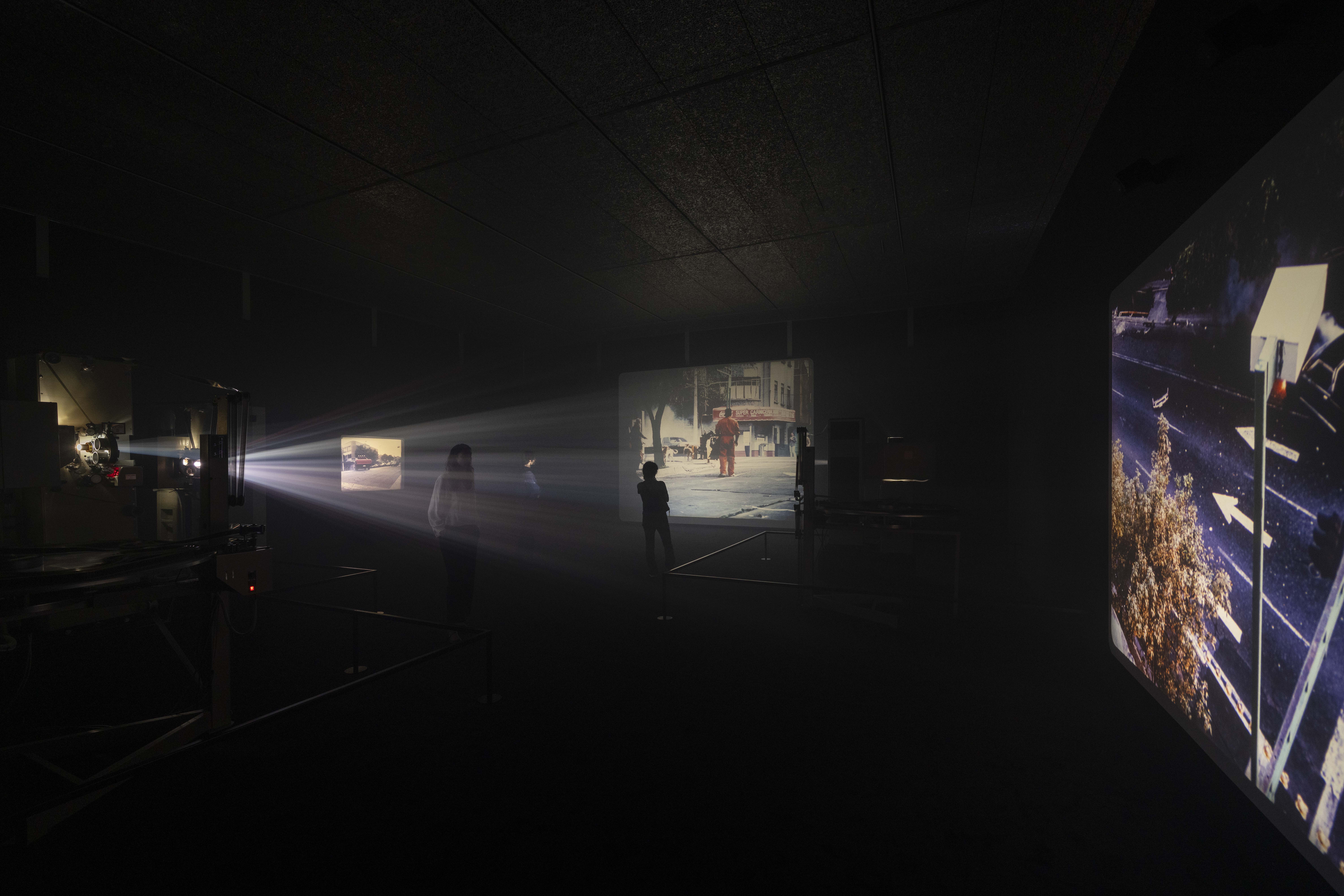Transitory and transformative, liminal spaces are so hot right now. Neither one thing or another, the intermediary space that exists in between time and place is atmospheric and foreboding, empty and full of potential. Depicting empty lecture halls and deserted interiors, Emanuel de Carvalho’s exhibition code new state blurs the boundaries of perception by morphing the familiar with the eerie and unsettling. Spread across two floors, de Carvalho’s paintings and immersive sculptural installations are arresting and affronting, inviting viewers into a dreamlike exploration of perception and the subtle distortions that shape our understanding of the world.
Informed by a background in medicine and neuro-ophthalmology, de Carvalho’s artistic practice delves into the neurobiological underpinnings of perception. The exhibition’s title, code new state, nods to Portugal’s authoritarian past while suggesting the potential for transformative mental and existential states. This juxtaposition of control and evolution permeates the exhibition, urging viewers to reassess their perceptual frameworks and societal norms. Throughout code new state, liminal spaces emerge, with a depiction of large empty lecture halls indicating eerie silences and emptiness, these subtle shifts in perspective are disorientating, and transform familiar environments into surreal landscapes. code lack, a monumental painting depicting a single solitary figure in an indecipherable setting, further explores liminality through distorted scale and perspective, asking viewers to confront the fluidity and complexity of spatial perception and the narrative this invokes.


Descending to the gallery’s lower floor, visitors are confronted with the lack slit system, a striking sculptural installation that delves deeper into the themes of surveillance and isolation. The imposing cube structure is reminiscent of a panopticon or Big Brother’s all-seeing eye, reminding us that the surveillance state is always watching. Venturing inside the sculpture, you’re enveloped in darkness and cut off from the opening above, isolated in another liminal space of De Carvalho’s making. The sense of confinement and separation is both comforting and disconcerting as the outside world is reduced to slivers of light and muffled sounds. It evokes the feeling of being trapped in a liminal space, where clear exits and full access remain perpetually out of reach. De Carvalho’s works reject the notion of a single, privileged viewpoint. The installation and composition of the gallery space require viewers to engage dynamically and weave through a collage of perspectives that blend and shift into something impossible to entirely decipher. This fluidity disrupts the static, one-point perspective of traditional installation, dismantling the idea of a coherent singular viewpoint and creating a melting pot of warped perception. Instead, de Carvalho’s spaces twist and contort to create an ambiguous and inescapable fever dream.
This disorienting effect is a commentary on the nature of perception and reality. Drawing inspiration from neuroplasticity and the philosophies of Catherine Malabou, de Carvalho’s work emphasises that our perceptions and behaviours are malleable and capable of transformation in response to changing conditions. His use of mixed media, from ground pumice in his paintings to steel and wood in his sculptures, further underscores the tactile, almost visceral quality of his exploration. By destabilising our perceptual norms, de Carvalho invites us to reconsider how we relate to our environment and each other. His works suggest that true engagement with the world requires a careful, almost tentative approach, acknowledging that we may never fully comprehend the spaces we navigate. This sense of perpetual uncertainty creates anxiety and curiosity, encouraging new ways of perceiving and existing.
In code new state, Emanuel de Carvalho masterfully transforms the gallery into a series of liminal spaces, where the familiar becomes strange and perception is constantly in flux. His works remind us that the world is not a static object to be possessed but a dynamic landscape to be encountered and reinterpreted anew. Through this continuous process of perceptual disruption and transformation, de Carvalho challenges us to embrace the fluidity of our perceptions and the transformative potential that lies within them.








